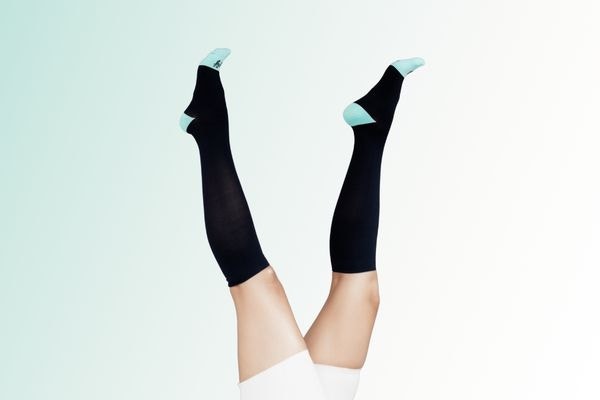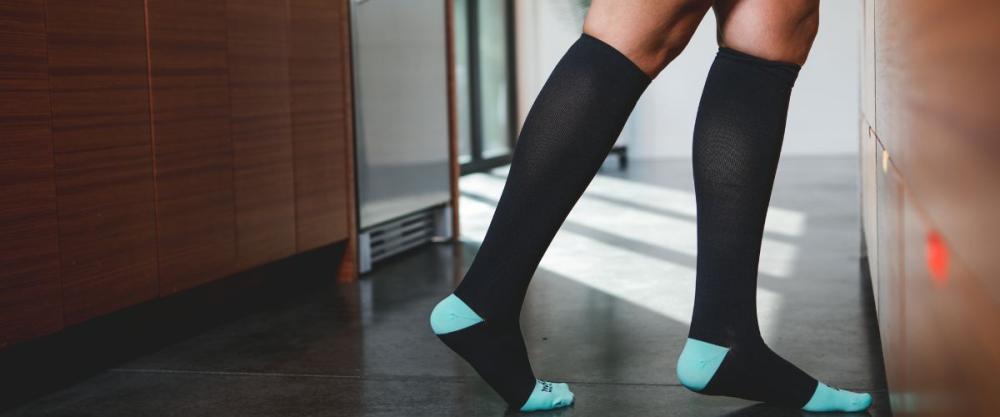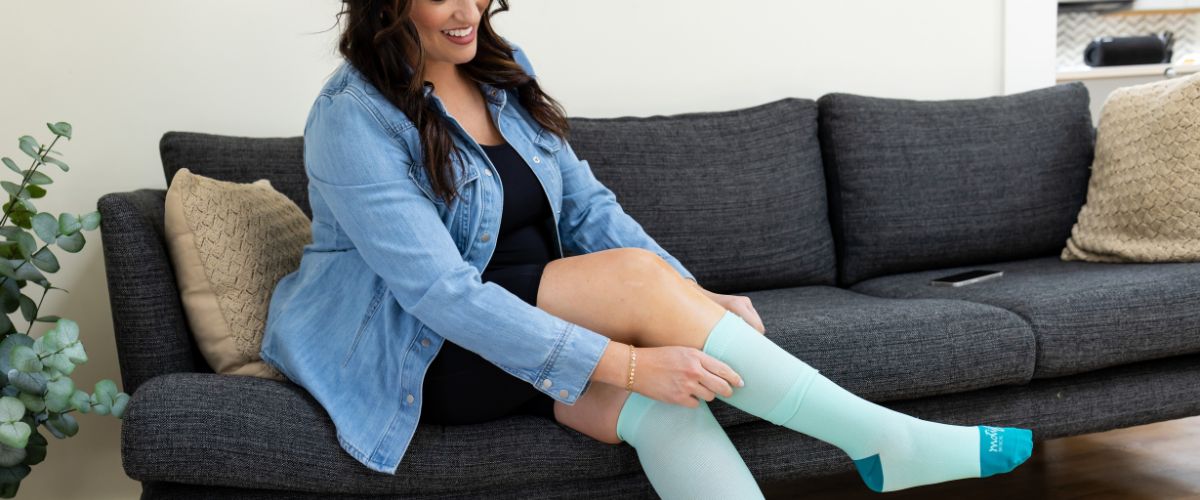Compression garments are wonderful tools to have on hand, even after labor and delivery. Whether you gave birth by c-section or had a vaginal delivery, you may find that wearing a postpartum recovery garment helps you feel more comfortable. Let’s talk about the five best ways to use compression wear during your postpartum recovery.
1. The Abdomen and Back Support
During every pregnancy, the abdominal muscles move apart to make space for your growing baby. However, this doesn’t happen all in one day during pregnancy; it also takes time for them to come back together postpartum. As a result, in the first 2 to 3 months after birth, your core muscles will lack the strength and function they usually have as you stand, walk, and move. Weakened core muscles can lead to lower back pain, hip pain, and poor posture. Wearing a postpartum recovery garment can provide gentle compression around your core to help you maintain proper posture and support your abdominal organs as you feed your baby and move around your house.
Although it is normal for your abdominal muscles to separate during pregnancy, this does not mean that you have diastasis recti! Your body needs time to restore itself after birth, so give yourself at least 12 weeks before you even think to check if you have abdominal muscle separation. And if you do, don't panic! While many people find their muscles come back together on their own, some new moms find it helpful to do specific exercises designed to help those muscle groups come back together. You can work with a local trainer specializing in postpartum recovery, or there are several online courses to choose from. Either way, train with someone who knows what they are doing! You can cause more separation if you do too much too soon or don't properly engage your core to bring those muscles together. And remember, the goal isn't to get back to "pre-pregnancy." Your body has been through a fantastic transformation, and it is normal for it to be different.
If you had a cesarean delivery, wearing compression will help ease your discomfort from the surgery. Sitting, walking, and quick movements like sneezing or coughing can be very uncomfortable during c-section recovery. Still, the compression provided by an abdominal binder will help make it less painful.
You can wear your postpartum support garment for several months postpartum. It can be beneficial to have extra core support as you increase your activity levels around the house and resume walking and light exercises. It is not recommended to wear an abdominal binder all day long, though. You don't want your abdominal muscles to think they don't have a job anymore! Ideally, you'll wear your postpartum compression for a few hours each day when you are the most active or feel you need the most support. Sleeping in it is unnecessary, and you also want to give your skin sometime without compression.
You want the baby to enjoy being at the breast, so anything you can do to avoid making breastfeeding a battle ground will be useful.
Postpartum compression should not be so tight that it is difficult for you to take a deep breath or cause discomfort. The material should be breathable and comfortable for you to wear for several hours during the day. You do not want to use shapewear, waist trainers, or a corset postpartum, as those items put too much pressure on your abdominal cavity and can lead to pelvic floor dysfunction or prolapse. Instead, look for compression wear designed for postpartum.
2. Reduce Swelling in Legs
You may have some extra swelling during your postpartum recovery if you received IV fluids and/or Pitocin during delivery. As a result, your legs and ankles can be pretty puffy and uncomfortable. The swelling usually lasts a few days to a couple of weeks and can contribute to night sweats. Wearing compression socks improves blood flow to your lower extremities and can provide extra support to reduce swelling. In addition, the compression will make your legs and ankles more comfortable, even while resting and recovering from birth.


3. Increased Comfort While Breastfeeding and Feeding Your Baby
In the first several weeks postpartum, a lot of time is spent holding and feeding your baby. It can be normal to round your shoulders and hunch a little while you gaze at this new beautiful new family member; however, many post-pregnancy aches and pains can come from not having good posture. Use a compression garment to provide additional support around your midsection. You may find it easier to maintain proper posture and avoid tight shoulders, headaches, and other issues resulting from improper positioning.
4. Increase Comfort While Traveling
If you're planning to travel to see family or friends in the postpartum period, you can wear your postpartum recovery garment AND your compression socks to help keep you comfortable on the way. Whether you are flying or driving, these items will reduce swelling, improve posture, and help you feel your best when you arrive where you're going.
5. Returning to Work


Some people have to return to work sooner than they feel physically or emotionally ready. Wearing postpartum compression and compression socks will help support your body during this time and help prevent additional strain on your core and pelvic floor.
Motif Medical’s postpartum compression, maternity compression, and compression socks are all medical devices the FDA approves for insurance coverage. Contact your healthcare provider for more information about how to receive yours so that you can give your body the best support through both your pregnancy and postpartum recovery.
Information provided in blogs should not be used as a substitute for medical care or consultation.







